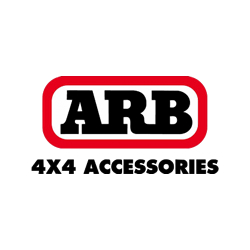Tech Talk – Winching loads and Recovery Point Attachment
For this issue I have just a short article with a couple of points. Greg’s article last month described an end-to-end analysis of a self-recovery winching setup using a triple-line pull. The point of the end-to-end analysis is to ensure you recognise the weakest point in your system, which determines the overall rating. Greg also referred to the need to know the weight of the vehicle and in passing referred to the effect that incline will have on that weight when winching. I want to expand on these just a little bit.
There’s a whole bunch of engineering that underlies the calculations of total load on a winching system. Some of this is summed up in the following table.

The calculation takes into account the mass of the vehicle, the slope you are winching it up, and the type of surface it is on (or in). You can see that the total load numbers can get pretty scary once soft ground is factored in. If anyone wants the background information and a copy of an Excel spreadsheet with this table, email me at information@st4wdc.com.au. I keep a copy on my phone, along with a simple clinometer app.
Related to this is the matter of recovery points and how they are attached. If you’ve done the club’s basic driver training you’ve been given chapter and verse on this subject and should be aware of the importance. In my web wanderings last week I came upon the website of the Cross Country Drivers Association (CCDA) which is one of the governing bodies for off-road 4wd sports in Australia. Hidden away in the site is a PDF manual with a lot of guidance for people preparing their vehicles for competition events (like Willowglen). One of the bits I found very interesting is the rules for recovery points:
4.1.5 RECOVERY POINTS
Rated recovery points shall be mounted at the front and rear of the vehicle chassis with at least two of 12mm or four of 10mm grade 5 or M8.8 bolts. Recovery points shall be painted red and shall be load rated at least twice the vehicle mass. Eyebolts are not considered as satisfactory recovery points.
Monocoque frame vehicles shall have each recovery point mounted such that the load is applied evenly to the vehicle frame, or have recovery points linked to achieve even load application.
The key points from this are that the recovery point itself has to be rated, and the number and grade of the attachment bolts is specified. (How do you know if your bolts meet the grade specification? Check this site – http://www.hi-tensilebolt.com.au/Head Markings.html. That site also has tables showing the tensile strength of these grades.
But this brings me back to the question of understanding and being aware of the weakest point in the system. What is the rated recovery point attached to with those graded bolts? Ideally it’s the chassis of the 4wd, and ideally at a point that is strong enough and reinforced with suitable backing plates. In reality the attachment to the vehicle can be far weaker than the rated recovery point itself. Think about it.

And I’ll close with another thought about a popular recovery system. There is always a weak point, and you need to understand it and work with it and even control it. You can buy a snatch strap with an 15,000 kg breaking strain, but do you really want the strap to be the strongest part of the system? I don’t like snatch recoveries at the best of times. I’ll avoided them wherever possible. In a snatch recovery consider where the weakest point is, and what will happen if it fails. In a snatch recovery if something is going to fail I want it to be the strap itself. I don’t want the failure point to be a big chunk of metal ripped off one of the cars and hurled back into the other car at near-supersonic speed. People have been killed that way – yes really. In a worst-case scenario I want the failure point to be the strap itself, because the broken snatch strap itself carries very little mass and has very little inertia (compared to a chunk of steel on the end of a perfect snatch strap). That’s why I’m still using my old strap.
Chris Nicholls










